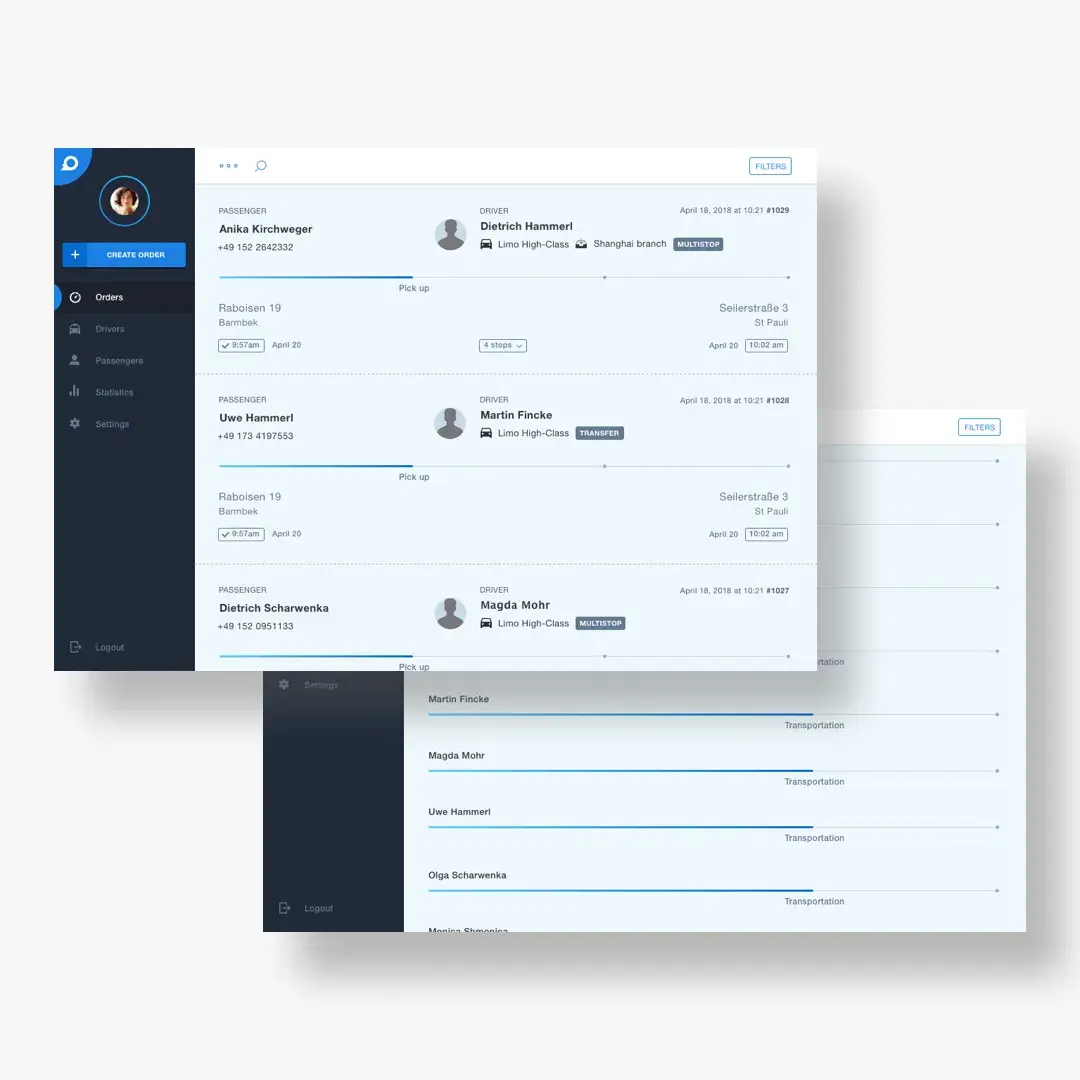Many companies maintain their own vehicle fleets and chauffeur services, as public taxi providers often fail to meet the high reliability and security requirements necessary for regular transportation of managers and clients. However, most processes for planning, booking, managing, and billing these rides are still manual and error-prone. Simple Excel spreadsheets in shared directories are considered progress in this field, yet high error rates and resulting costs are common consequences.
Our solution revolutionizes limousine management in the B2B sector. We have developed a transport SaaS solution that fully digitalizes the entire process – from initial request to final ride cost accounting. Thanks to this software, resources such as vehicles and drivers can be optimally utilized and efficiently shared between different company divisions or even across companies. This leads to improved fleet utilization and reduced idle times.
Table of contents
How the B2B E-Hailing Platform Works
Our client recognized the enormous potential of digitalization in transportation and commissioned us to develop a fully digital concept for B2B E-Hailing. The result is a platform that acts as a corporate chauffeur service and enables companies to efficiently manage their vehicle fleets. The platform offers not only a web application and mobile apps for bookings and drivers but also powerful backend software based on microservices.
Every step from booking to ride cost accounting is digitally mapped. Companies can not only optimize their own limousine management processes but also make available vehicles accessible to other companies through the vehicle sharing function. This also enables smaller companies to access professional chauffeur services.

Benefits of the Solution for Our Clients
-
Enhanced Collaboration and Transparency: Fleet management is optimized through a central platform. All drivers – whether employed or freelance – and vehicles are centrally managed through the backend. Authorized employees can access data and view planned rides from any company location. This facilitates coordination and reduces alignment efforts that often caused friction losses before the software’s implementation.
-
Route Optimization and Resource Efficiency: Intelligent route optimization algorithms, specifically developed by our team, significantly reduce waiting times for vehicles and chauffeurs. Simultaneously, they optimize vehicle and driver distribution and utilization, leading to more efficient resource use and minimized idle times.
-
Time Savings through Automation: Employees can easily and quickly book their rides through mobile apps without relying on direct contact with the responsible department. A central app rollout ensures all users always have the latest version and immediate access to new features.
-
Flexible Integration with Existing Systems: Thanks to the use of microservices and APIs, the platform can be seamlessly integrated with existing corporate software, such as fleet management software or ERP systems. This enables, for example, automatic ride cost accounting or data import for further mobility utilization analysis.
-
Data-Driven Decision Making: The platform continuously analyzes fleet utilization, enabling detailed evaluation of operational mobility. These reports serve as a foundation for informed business decisions and support the company’s long-term corporate mobility strategy.
-
Vehicle Sharing for Additional Efficiency: Through the integrated vehicle sharing function, companies can make their unused resources available to other businesses, creating additional revenue streams and optimizing fleet utilization across company boundaries.
